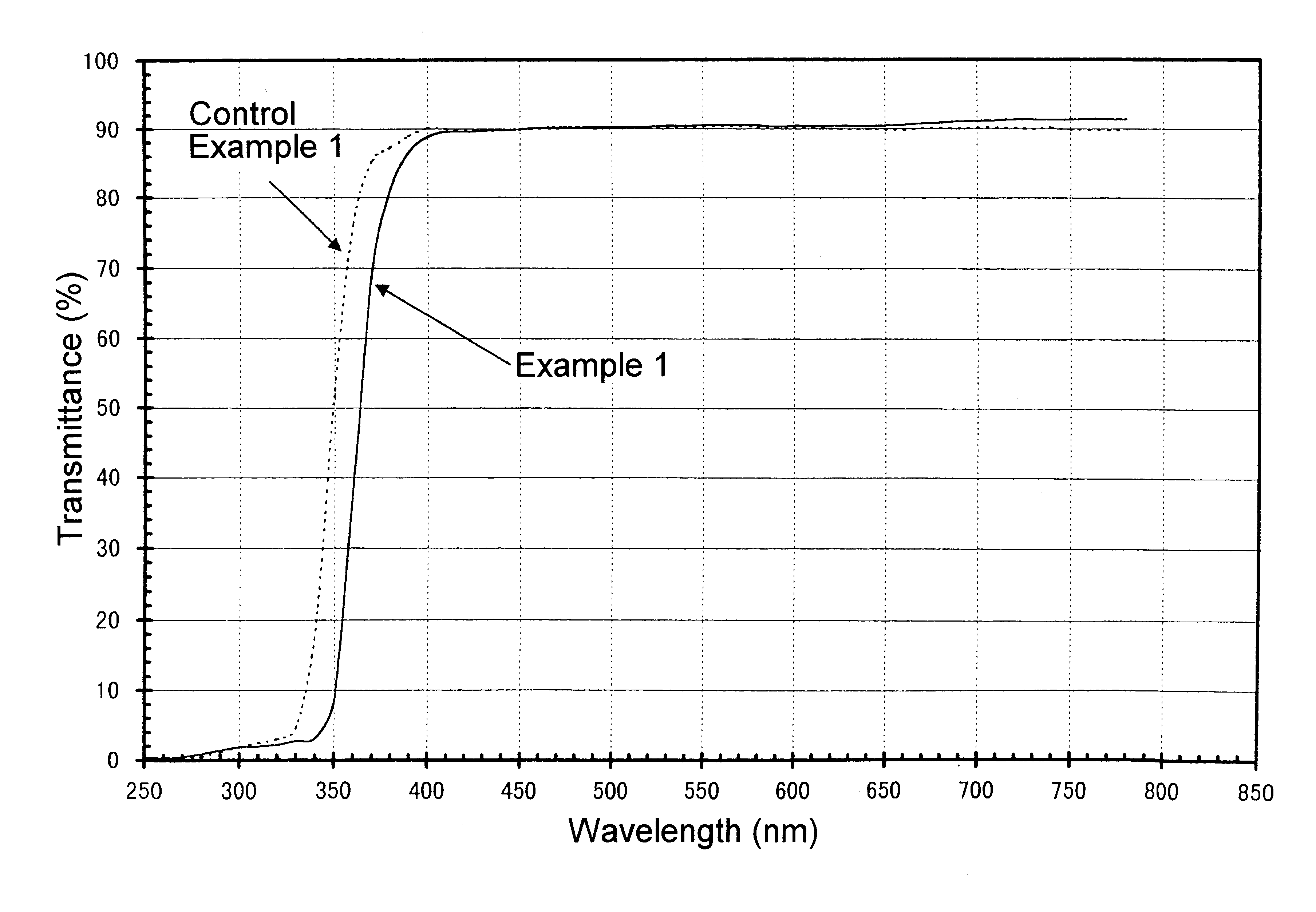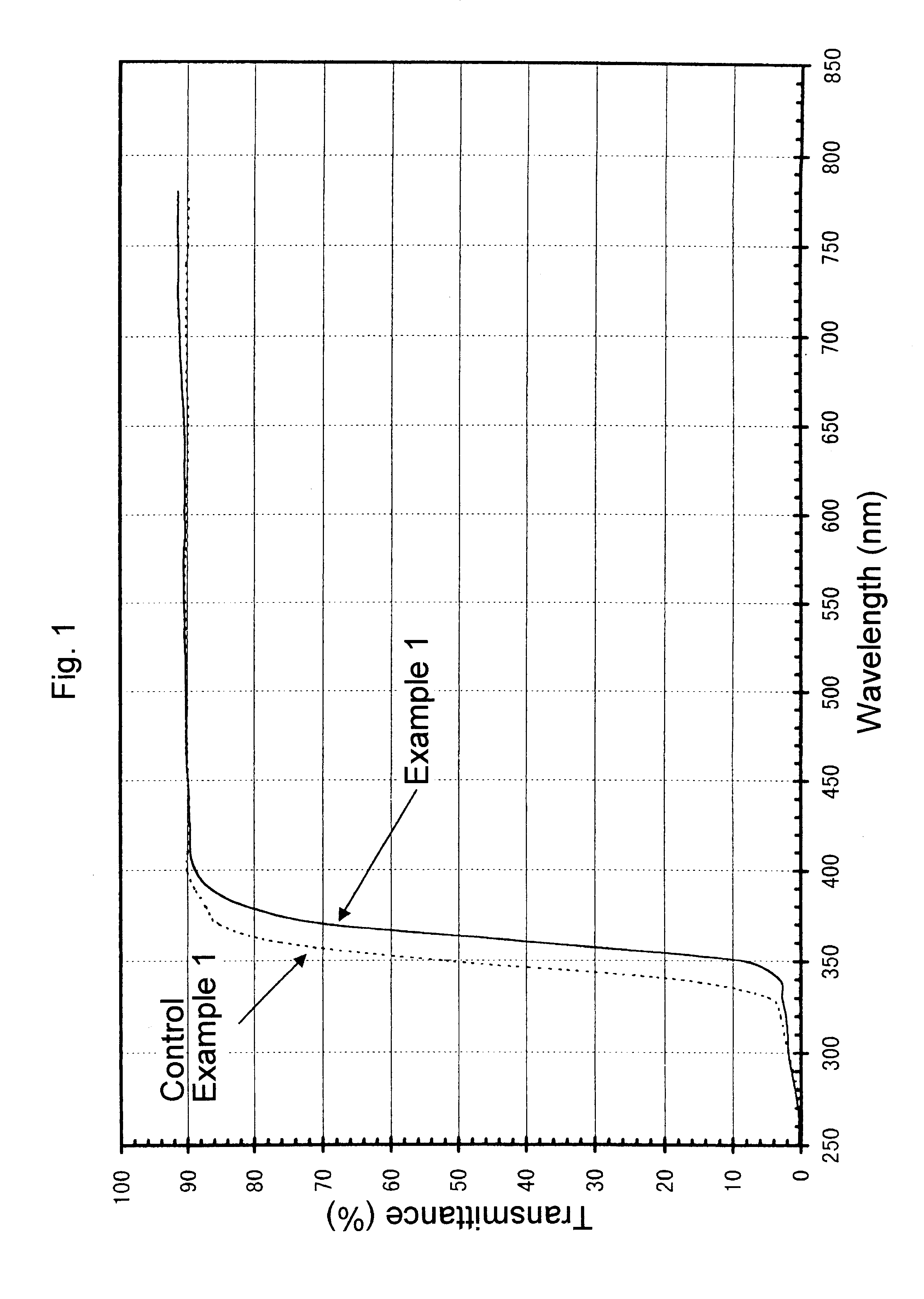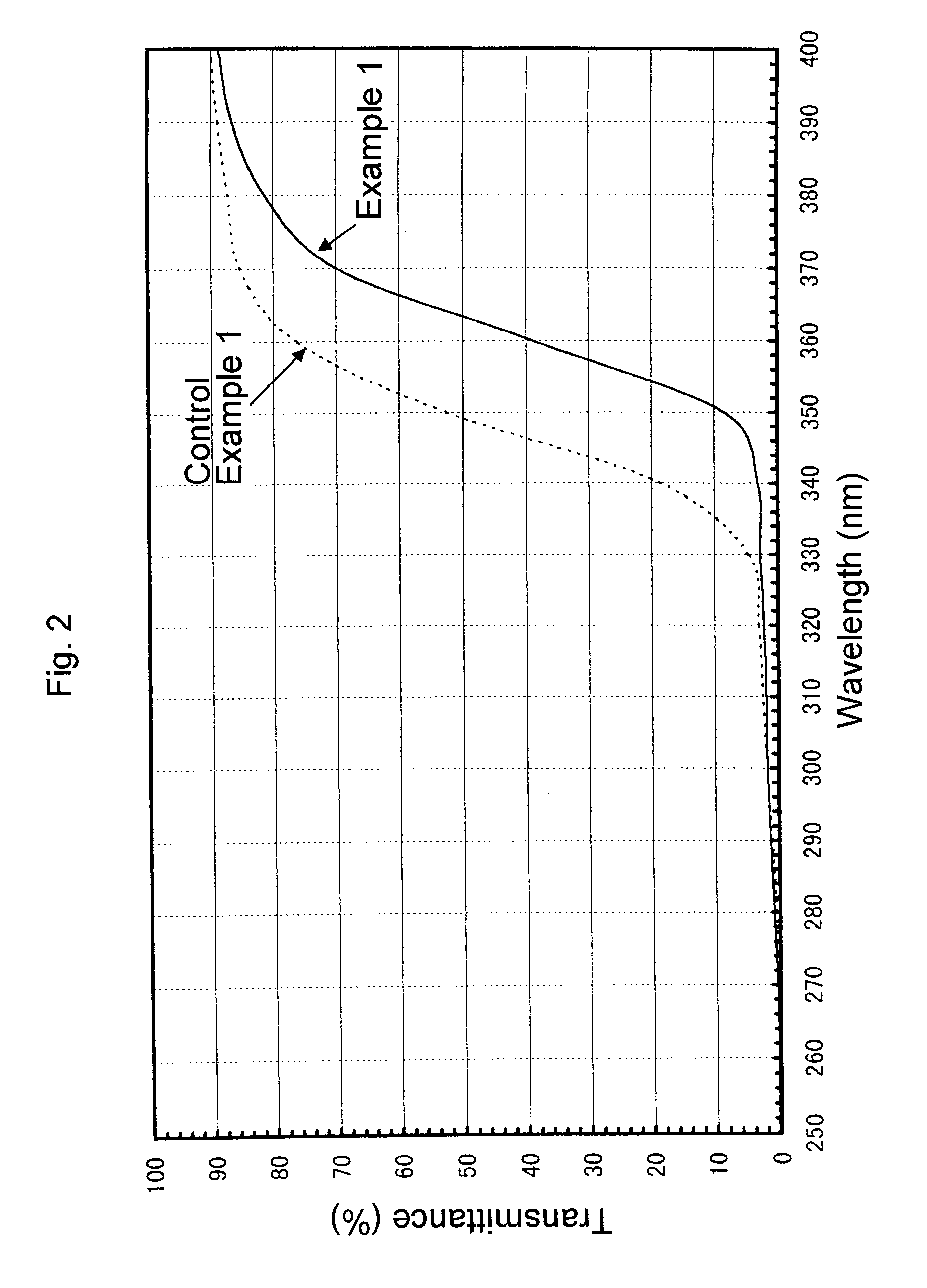Ultraviolet radiation-absorbing, colorless, transparent soda-lime silica glass
a sodalime silica glass, ultraviolet radiation technology, applied in the field of ultraviolet radiation absorption, colorless, transparent sodalime silica glass, can solve the problems of high transmittance, color fading or color fading, deterioration of flavor, etc., to reduce the brightness of glass, decolorize red-purple coloration, and improve the appearance of transparent glass
- Summary
- Abstract
- Description
- Claims
- Application Information
AI Technical Summary
Benefits of technology
Problems solved by technology
Method used
Image
Examples
example 1
A batch composition was prepared by weighing and mixing the following components.
The obtained batch composition was introduced into a continuous tank furnace having a melting capacity of 150 t / day and melted at a glass melting temperature of 1450.degree. C. for 38 hours, then passed through a feeder at 1270.degree. C., molded and passed along a line equipped with a conventional annealing lehr to obtain bottles having a capacity of 300 mL.
A sample for measurement was cut out of a glass bottle thus obtained, polished and measured to obtain a transmittance curve on the spectrophotometer. The transmittance curve thus obtained is shown in FIGS. 1 and 2. This glass bottle, as calculated for sample thickness of 10 mm, had brightness (Y) of 87.0%, dominant wavelength (.lambda..sub.d) of 572.5 nm, and excitation purity (Pe) of 1.1%. In addition, its transmittance at 330 nm was 2.8%. Furthermore, in the visible region of 420-780 nm, its transmittance was not less than 88% without any apparent...
control example 1
A batch composition was prepared by weighing and mixing the following components. Using this batch composition, glass bottles were produced by the same method as in Example 1, which had a capacity of 300 mL.
A transmittance curve was obtained with the glass bottles of the Control Example 1 above in the same manner as in Example 1. The transmittance curve thus obtained is shown in FIGS. 1 and 2. Color analysis carried out in the same manner showed that it had brightness (Y) of 86.6%, dominant wavelength (.lambda..sub.d) of 560.6 nm and excitation purity (Pe) of 0.41%. Transmittance at 330 nm was 5.0%. Furthermore, although the transmittance was not less than 88% in the visible region of 420-780 nm, the transmittance at the range of 650-780 nm was lower by about 2% than that obtained in Example 1. These data indicate that the glass bottle of Control Example 1 has insufficient ability to absorb ultraviolet radiation, in particular around 330 nm, and has a somewhat bluish tint.
Compositio...
control example 2
A batch composition was prepared by weighing and mixing the following components. Using this batch composition, glass bottles were produced by the same method as in Example 1, which had a capacity of 300 mL.
A transmittance curve was obtained with the glass bottles of the Control Example 2 above in the same manner as in Example 1, and color analysis carried out in the same manner, showing that it had brightness (Y) of 88.9%, dominant wavelength (.lambda..sub.d) of 561.8 nm and excitation purity (Pe) of 0.71%. Transmittance at 330 nm was 3.6%. Furthermore, within the visible region of 420-780 nm, transmittance around 420-500 nm slightly increased. This indicates that the glass bottles of Control Example 2 has a slightly bluish tint.
Compositional analysis of the glass of Control Example 2 by X-ray fluorescence spectrometry (but by spectrophotometry with regard to the proportion between Fe.sub.2 O.sub.3 and FeO) gave the following proportions (% by weight) in the composition.
PUM
| Property | Measurement | Unit |
|---|---|---|
| transmittance | aaaaa | aaaaa |
| transmittance | aaaaa | aaaaa |
| dominant wavelength | aaaaa | aaaaa |
Abstract
Description
Claims
Application Information
 Login to View More
Login to View More - R&D
- Intellectual Property
- Life Sciences
- Materials
- Tech Scout
- Unparalleled Data Quality
- Higher Quality Content
- 60% Fewer Hallucinations
Browse by: Latest US Patents, China's latest patents, Technical Efficacy Thesaurus, Application Domain, Technology Topic, Popular Technical Reports.
© 2025 PatSnap. All rights reserved.Legal|Privacy policy|Modern Slavery Act Transparency Statement|Sitemap|About US| Contact US: help@patsnap.com



